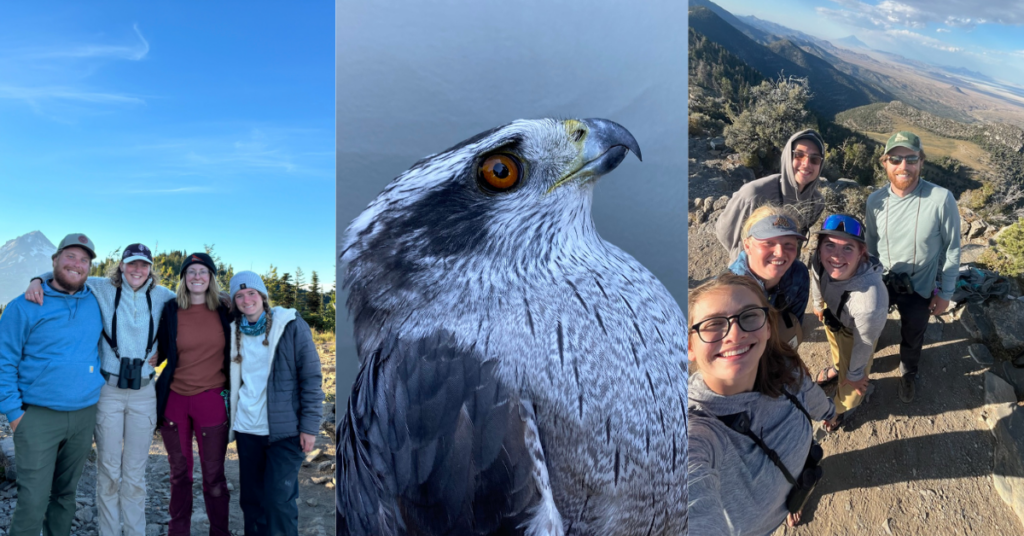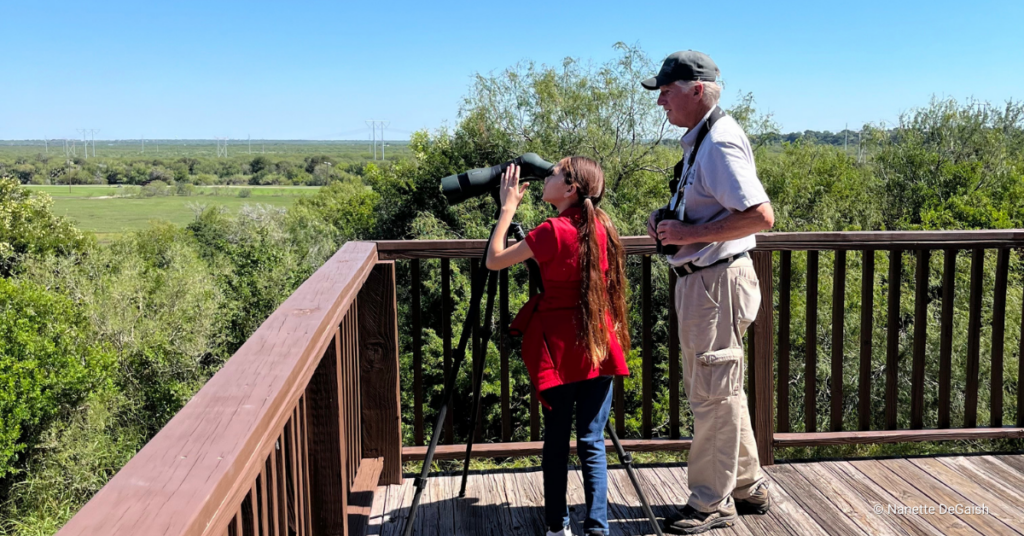When HawkWatch International created the Global Raptor Research & Conservation Grant (GRRCG) in 2020, the aim was to conserve some of the most at-risk raptors around the world. But to do so requires basic knowledge about those species. For many raptors around the world, that basic knowledge is incredibly limited—so much so that zero scientific publications exist for some species.
Over the last 18 months, four raptor biologists set out to close knowledge gaps and conserve species around the world. In the course of this work, many of them have also documented key information about species for the first time.
Marilyn F. Dela Torre, Philippine Hawk-eagle, Philippines

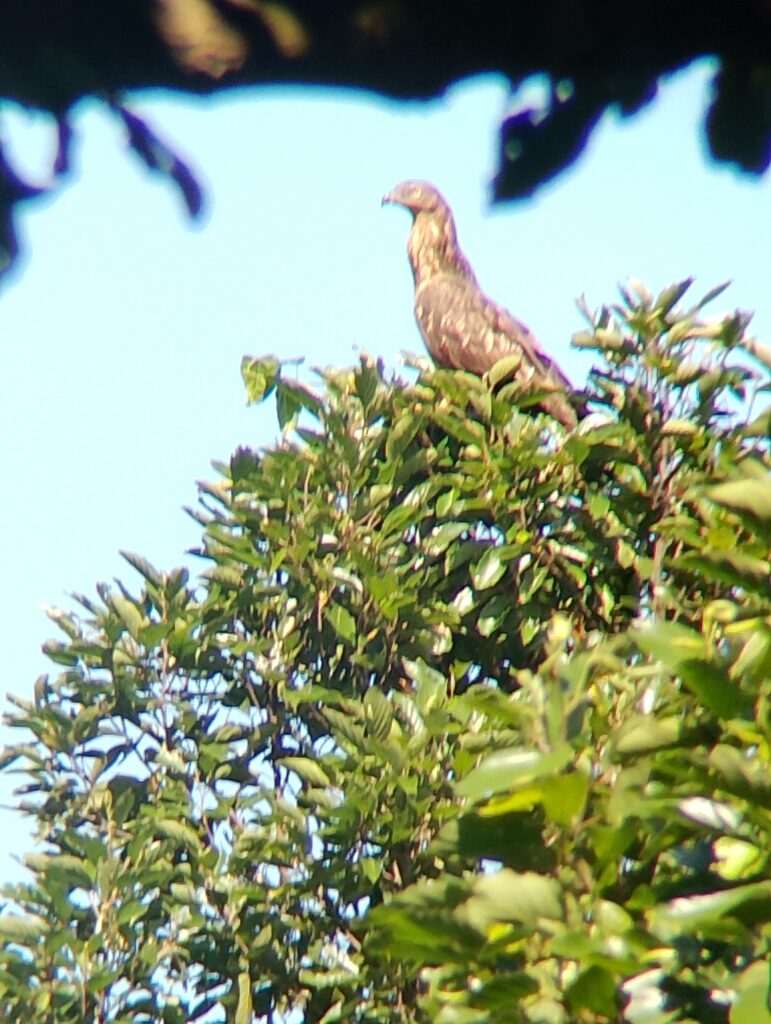
Marilyn surveying and a sighting of the Philippine Hawk-eagle
With fewer than 600 estimated mature individuals left in the wild, Marilyn F. Dela Torre set out to look for conservation opportunities for the endangered Philippine Hawk-eagle. However, the species also had zero published scientific studies at the time of her application, making basic scientific research key. In addition, working to document the distribution and abundance of the species in the ancestral forest, Marilyn conducted focus groups in the local community to learn more about what they knew about the species, finding that timber poaching and illegal wildlife hunting were some of the key threats to the Philippine Hawk-eagle and other raptors in this area. Together, Marilyn has used this information to create a Species Action Plan that she looks forward to presenting to local government entities and other funders that can support further research and conservation efforts.
Asman Adi Purwanto, Javan-scops Owl, Indonesia
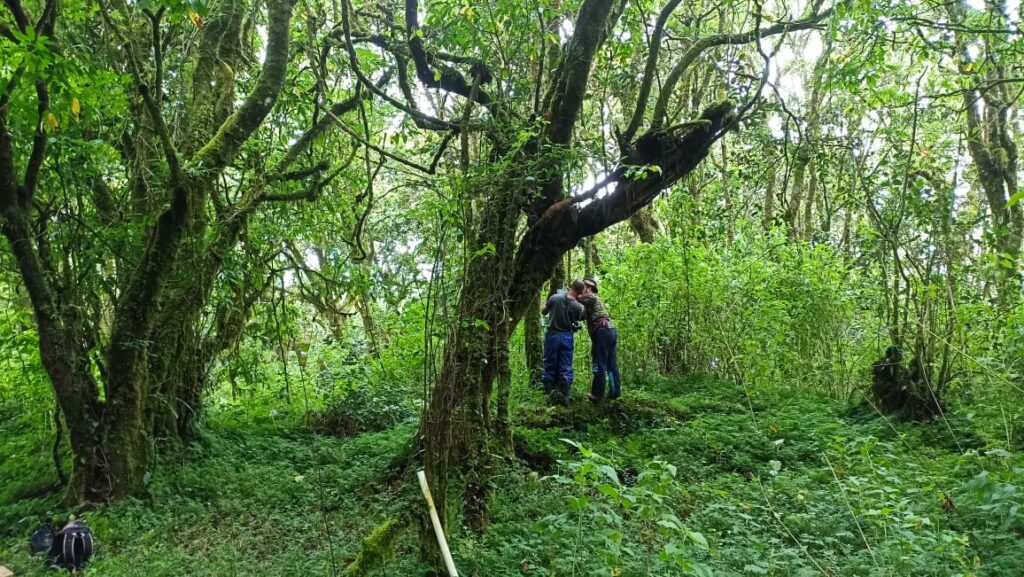

The team conducts surveys for the Javan Scops-owls, pictured at right in a photograph by Raafi N.A.
Across the Celebes Sea in the South Pacific, Asman Adi Purwanto also embarked on groundbreaking research on a species with no published studies—the Javan-scops Owl. During his 18-month study period, Asman and his team conducted dozens of surveys in wet and mountainous terrain in Mount Merbabu National Park. Although they encountered relatively few Javan-scops owls this way, they were aided in their research by the use of passive recording devices that collected over 17,000 sound files! Asman and his team still have a lot of work to do analyzing all of these recordings, but look forward to publishing their findings in the near future. With support from Mount Merbabu National Park, they also look forward to continuing this research in other areas of the park as they work to create a comprehensive distribution map for the species in Java.
David Ricardo Rodríguez-Villamil, Cloud-forest Pygmy-Owl, Colombia


David monitoring and Cloud-forest Pygmy-Owl photographed by Steve Hilty
Across the globe from Asman, David Ricardo Rodríguez-Villamil also worked to document basic information about an at-risk owl species. Using active observations, passive sound recording, and nest box monitoring, David has worked to understand the diet, reproductive biology, vocal activity, habitat preference, and population status of the vulnerable Cloud-forest Pygmy-Owl. Although they never saw this owl and have yet to have one occupy a nest box, they heard it several times during active surveys and collected 36,451 minutes’ worth of passive recordings. David’s work is ongoing, and thanks to support from last year’s sponsor, Kaddas Enterprises, he was awarded a follow-up grant to support this work.
Million Abushi Tiko, Hooded Vulture, Ethiopia

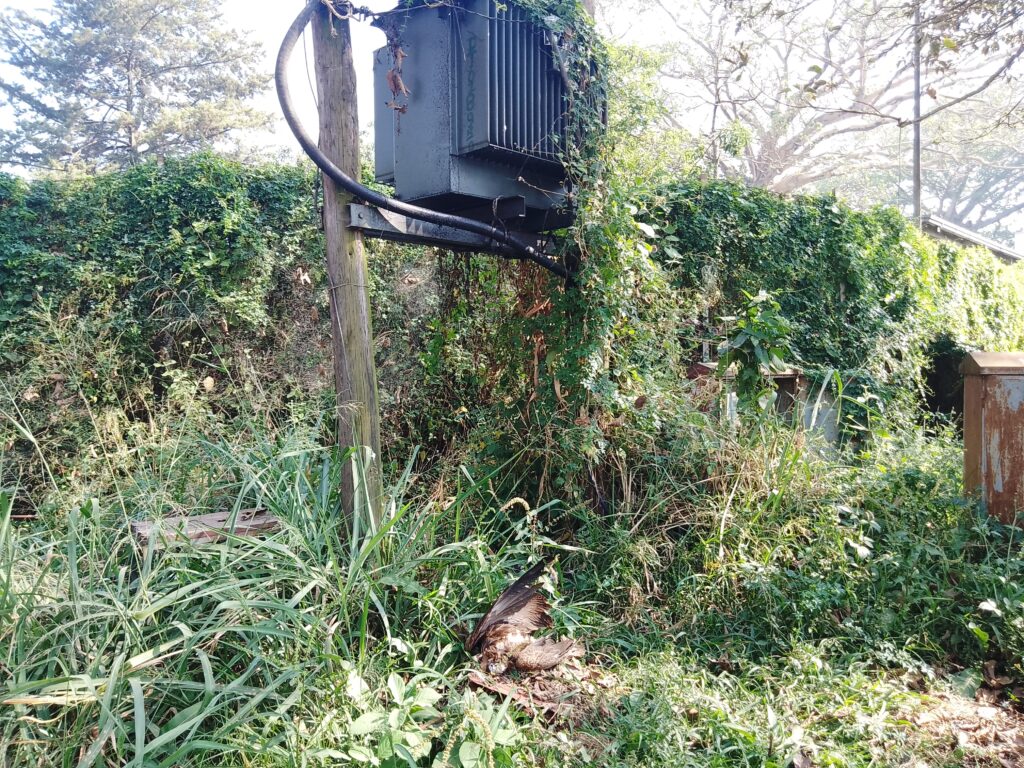
A member of the research team speaks with a guard at an abattoir in Jimma City about potential causes of vulture mortality (photograhed by Gemechis Teshite); they confirmed that several birds, like the one pictured on the right, were electrocuted.
Although Million Abushi Tiko wasn’t studying a species with zero published studies, there were still plenty of knowledge gaps to fill about the Hooded Vulture. Specifically, Million focused on identifying the threats—both natural and human-caused—impacting this critically endangered species. One of the biggest he identified was electrocution. Over the course of his study, Million discovered over 18 electrocuted Hooded Vultures, and residents confirmed this as a top threat during 92 surveys conducted in the local community. Million looks forward to sharing more about these threats, as well as a population distribution map, in an upcoming publication. He also hopes to finally locate breeding grounds for the species, which his team was unable to find despite extensive surveying.
This blog was written by Kirsten Elliott, HWI’s Development & Communications Director. You can learn more about Kirsten here.

